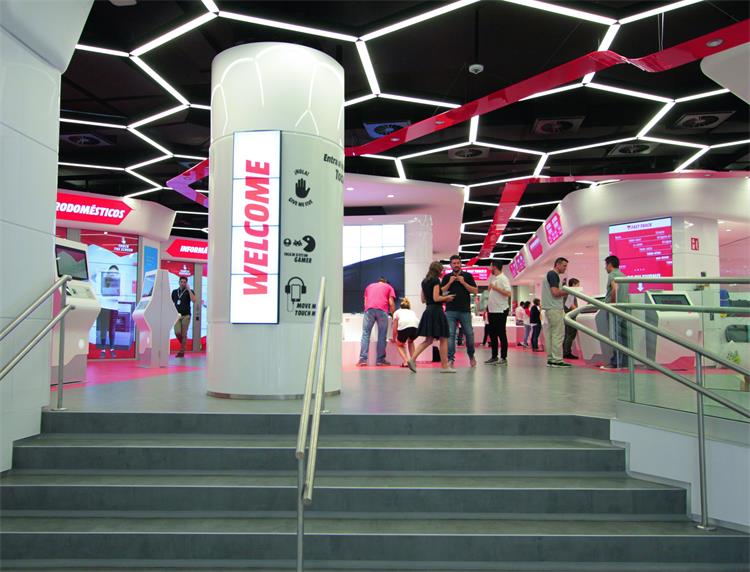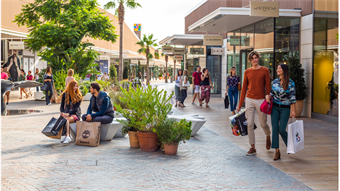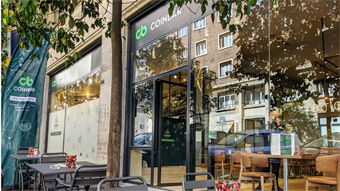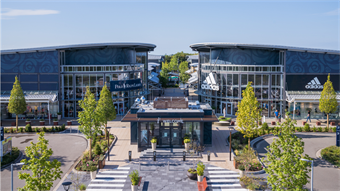Putting the zap into gadget sales
- In Innovation
- 10:23, 10 November 2017
- 1529 Views

MediaMarktSaturn is Europe's leading consumer electronics retailer and it’s setting the standard in new retail experience.
The barn-like retail warehouses of the 1980s and 1990s which housed the big electronic retailers lacked atmosphere, customer assistance and often the one piece of electronic equipment you’d visited to buy. Then came the online electronics retailers. Thousands of items just a click away, hundreds of ‘independent’ product reviews and all from the comfort of a laptop.
So how are physical electronic retailers surviving? We spoke to Ralf Bauer, vice president of corporate property management at MediaMarktSaturn, a household name across Europe. The company includes the brands MediaMarkt and Saturn, which collectively operate around 1,000 European physical stores integrated with online sales platforms. The group also operates pure online providers such as redcoon and iBood as well as the digital entertainment platform JUKE.
The own brands PEAQ, KOENIC, ISY and ok. round off the portfolio. In fiscal year 2015/16, MediaMarktSaturn generated a net turnover of around €22 bn from across 15 countries. The business is majority-owned by Ceconomy AG and is market leader in nine European countries.
How important are physical stores to MediaMarktSaturn?
With increasing digitisation, the buying behaviour of our customers is changing as they move naturally between all sales channels to inform themselves, buy or use services. We react to this by connecting our stores, online and mobile.
Customer expectations of physical retail has also changed. Anyone visiting our stores today wants to touch, try and experience products. In the case of new technology such as drones or virtual reality, many customers see them in our stores for the very first time.
What are the company’s store requirements?
Our selection of location is linked to specific requirements, of course. These include, among other aspects, a good connection, possible walk-in customers, the catchment area and proximity to places where customers are already commuting to work or in their free time, as well as parking facilities and floor space. The average sales area for us is around 3,000 m2. However, depending on the environment, we are diversifying: from the small 400 m2 MediaMarkt Digital Store in Barcelona to the huge 18,000 m2 Saturn in Hamburg.
We now also offer shop-in- shop concepts concentrating on the consumer electronics sector, for
example in hypermarkets. Today, the size and the assortments are more focused on local conditions
and offer customers the best shopping experience for their situation.
What technologies are you installing into your stores?
We use technology to combine the advantages of on- and offline shopping. On average, every second
online purchase is picked up at a store – which shows acceptance of multichannel retail. We can show
our customers what products are available in the store on site via online or an app. They can order and
have them delivered the same day – or pick them up in the store.
Our stores are also fully equipped with digital price tags so the price can be changed directly from the
merchandise management system.
The speed advantage that pure online retail once offered has now been eliminated. In addition, the price tags are the basis for further technologies: they allow us to provide additional information via NFC (near field communication) when customers hold their smartphones over the tag. In the background, the price tags are linked to the digital category management and the supply chain. And in the store, they represent the basis for in-store navigation systems or service robots.
Is it difficult to find the right physical space to open stores?
Our challenge is to find the right locations at affordable prices. The competition for really good retail locations has become stronger, but overall the cost pressure on all retailers has also risen, so rents cannot develop much more significantly upwards. This is where our successful transformation to becoming a multichannel retailer benefits us. Our different formats are becoming more relevant to our customers.
Where is MediaMarktSaturn looking to expand its physical retail?
We continually optimise and expand our location portfolio in the countries where we operate. We want to be physically accessible to our customers in as many locations as possible. This is where location moves play a role, but also our new, smaller store formats help. These smaller locations often generate the same sales volumes as the larger stores, because they can cover the entire range through multichannel. We are present in more diverse locations than we were a few years ago.
Where are you not considering expansion?
We see numerous possibilities and wouldn’t rule out anything. It ultimately depends on where and how we can best function as a partner, daily companion and navigator for our customers. How many new MediaMarktSaturn stores are scheduled to open in 2017 and 2018?
Expansion means far more than just opening new stores. We will keep opening new stores, but we will
also invest in our multichannel approach and in optimising our existing store network.
Where do the challenges lie for MediaMarktSaturn in the next few years?
On the real estate side, the biggest challenge is always to meet the needs of our customers. We have comprehensively digitised our stores and are moving closer to our customers with our new formats. We will continue down this path.
What are the benefits of having retail stores over the online-only consumer electronics retail?
Customers want the best of on- and offline in their daily lives. We support this with our consistent multichannel approach. Our physical business provides consumers some added value that they can’t find with pure online retailers – services, personal advice, testing and the shopping experience.
More than 70% of Saturn customers like AR & VR to shop
More than 70% of Saturn's customers would use Augmented Reality (AR) and Virtual Reality (VR) solutions for shopping, and these innovations play a major role in the future of the trade.
This was the result of a study based on a survey of some 1,300 Saturn customers who participated in the HoloTour in 20 Saturn markets from May to July 2017. With the tour, Saturn showed how the shopping of the future could look. For this, the reality of the customers was expanded by the mixed-reality glasses Microsoft HoloLens. The virtual avatar Paula guided the customers through the markets to selected products and presented them with virtual additional information and animations.
‘Our study shows that augmented reality and virtual reality are of great interest,’ said Martin Wild, chief digital officer of MediaMarktSaturn Retail Group. ‘With the new digital technologies, the physical shopping experience will be even more individualised and personalised in the future.’






